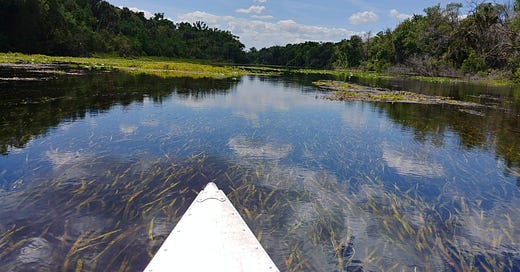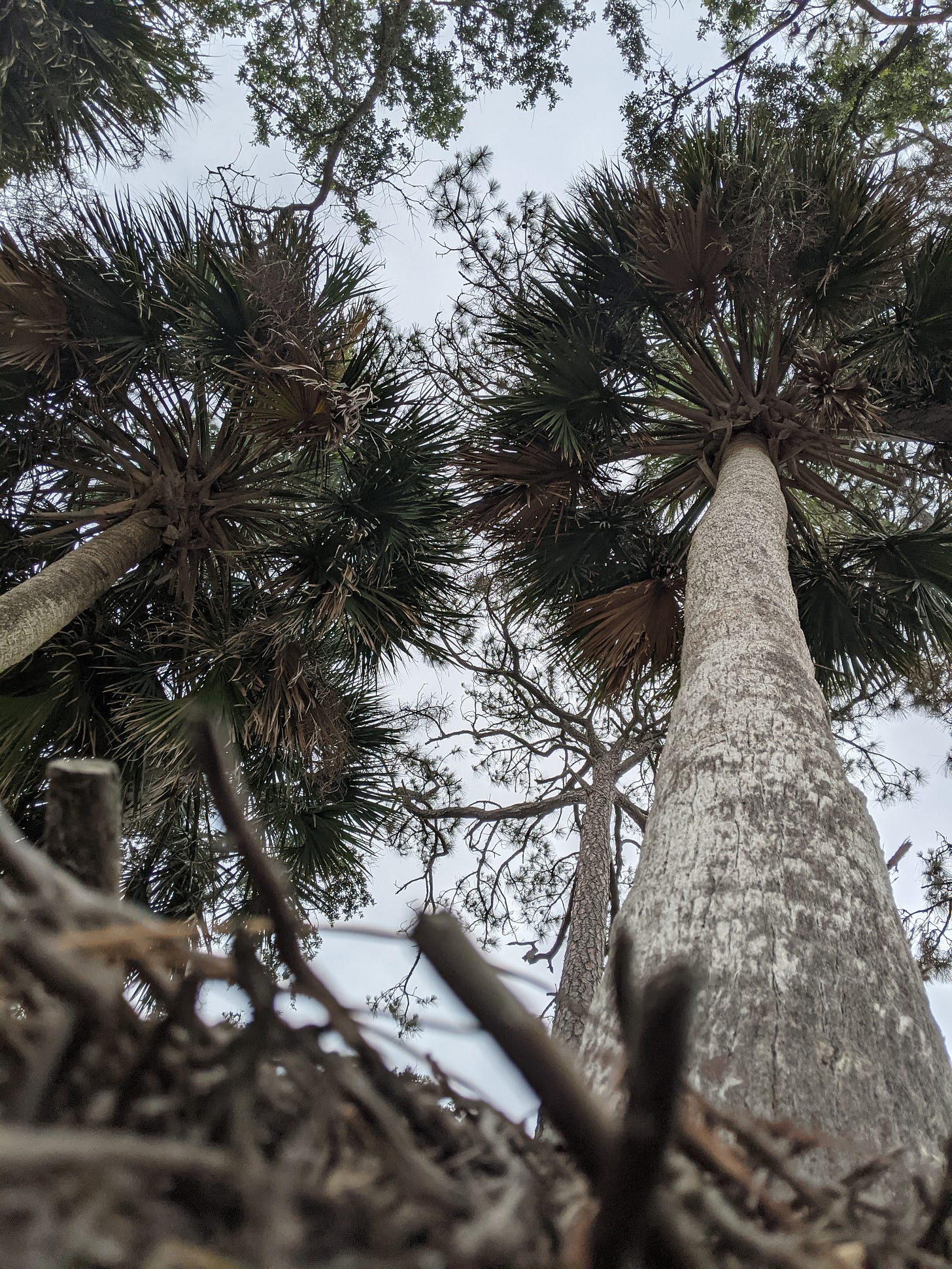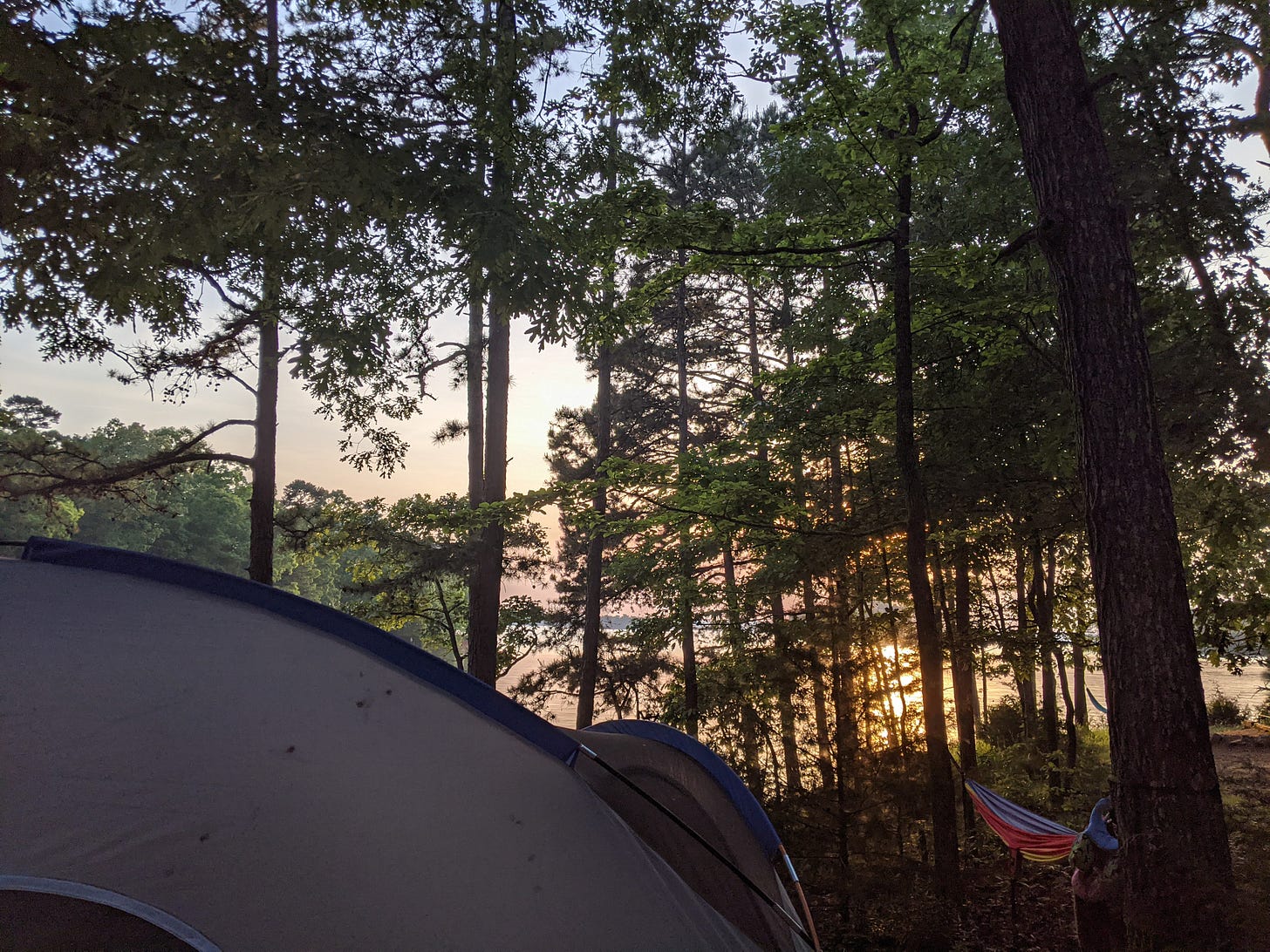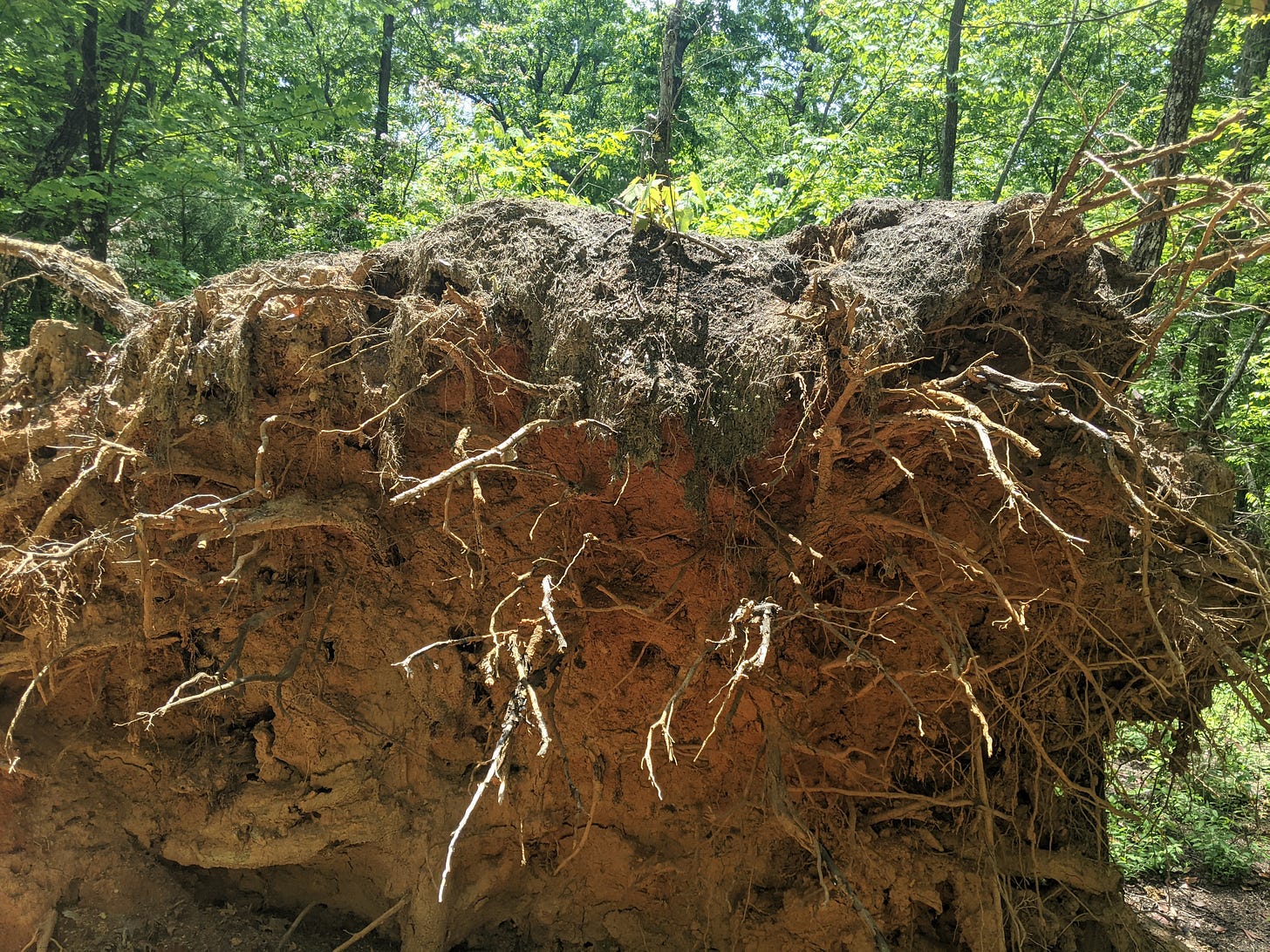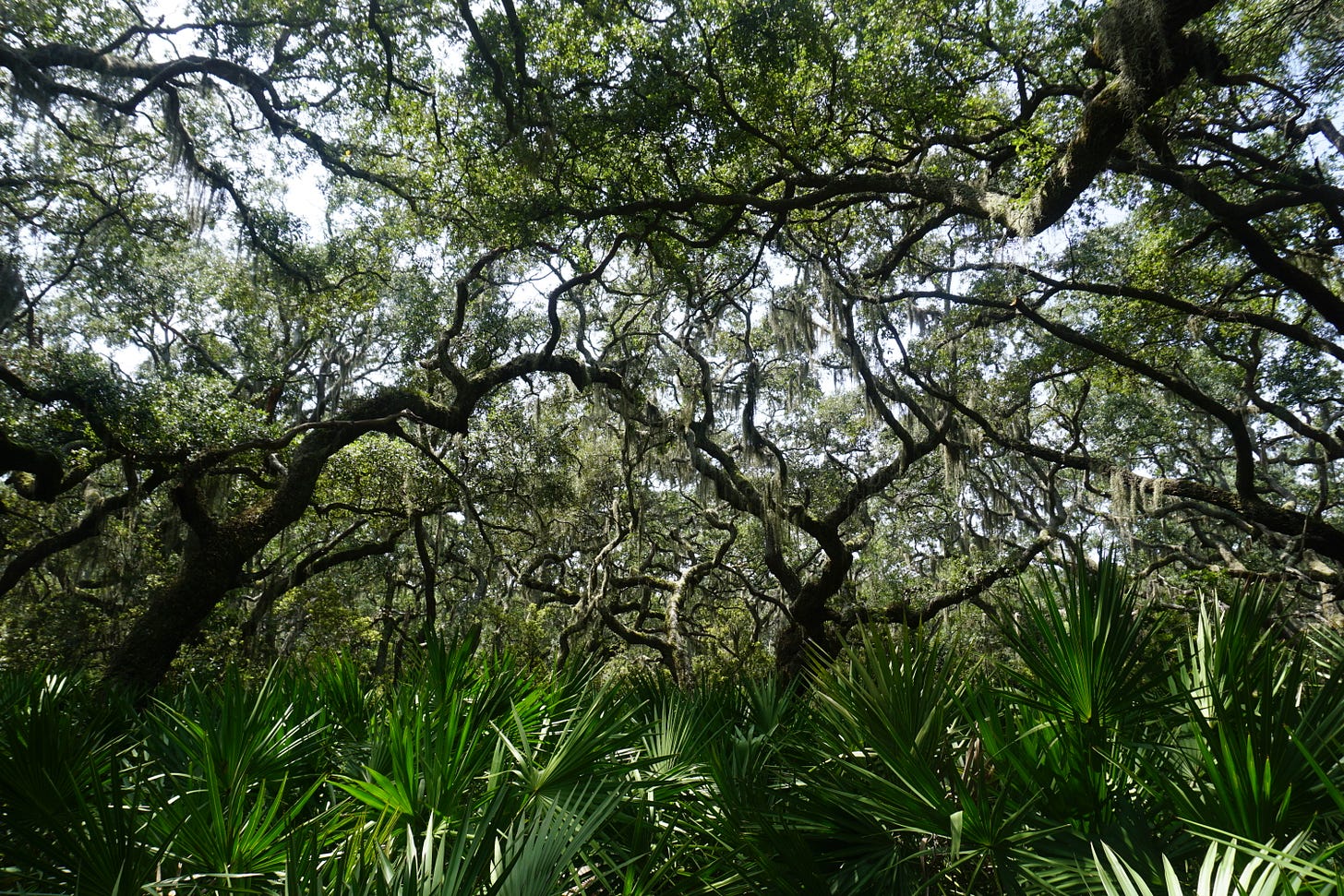A little fin swished above the water near where our daughter was jumping in the waves, and we called out for her to join us on the shore — right now.
We assumed it was a small shark, swimming in the shallow end of the Atlantic near Hunting Island. Probably a baby, probably harmless, but you never know until you cross one.
Safe on the sand, we talked about what we’d seen and why we were playing it safe. Then we watched a row of pelicans swoop low over the choppy surface of the water, dropping in one at a time to gulp gullets full of brine and fish.
Could a pelican eat a baby shark? our daughter asked.
Possibly yes, I guessed, look at the size of that beak! (Sharks, it turns out, have also been known to eat songbirds. Death’s maw swoops in both directions.)
My wife and I have been tent camping with our children since they were babies, stubbornly refusing to give up the things that brought us joy before parenthood. Now that our daughters are 6 and our son is 4, they are more active participants. They help us build fires, they catch small critters for observation, and they lead the way on hikes in the woods.
We go for simple reasons. It is good to get out of the house, especially in years when we sit inside together all day every day. We want our kids to be reasonably well-equipped and curious about the world, and we occasionally shoehorn in some lessons from the girls’ kindergarten class.
Camping is also a chance to instill certain values and a certain respect for the natural world. When we walk out into the ocean or the forest, our children know we are in a place where the humans are guests and we have to tread lightly.
There is an indomitable feeling to the wilderness. There is also a very real sense in which it's on the verge of collapse.
Hunting Island, where we stayed this weekend, is the most popular state park in South Carolina, with 5,000 acres of beach, marsh, and maritime forest to the south of Beaufort. It’s an austere and windswept place.
After the one-two punch of Hurricane Matthew (2016) and Tropical Storm Irma (2017), Hunting Island was decimated by erosion and had to be closed down to visitors. In 2020, the state park system hired a crew to run a pipe into the ocean and pump an astonishing 1.2 million cubic yards of sand onto the beach, reshaping the coastline in the largest renourishment project on the island since 1980, according to the Island Packet. In the process they had to remove the beloved “boneyard beach,” an array of sun-bleached fallen trees near the north end of the island.
The coast was always in transition, but the pace of change catches us off guard sometimes in the Anthropocene. The ocean is rising, and the frequency and intensity of tropical cyclones are increasing in our lifetime. Things will not get better soon, on this island or any other.
We don’t talk about this with our children yet, but there is a possibility that the places we visit now will be gone when they are adults. The land is literally washing away, the climate is changing, and the animals that delighted or terrified them may move on or become extinct.
Even the parks themselves, with their rugged 20th-century cabins and bathroom structures, are largely the product of something we may never see again. The Civilian Conservation Corps, a federal jobs program that employed 3 million men to build access points to the United States’ natural treasures, is hard to imagine in the current political climate.
I feel at rest camping in the woods or at the edge of the dunes, but I also feel a sense of doom in the periphery.
I recently picked up a copy of the environmentalist Sigurd F. Olson’s 1956 classic The Singing Wilderness at the used bookstore (admittedly because it inspired one of my favorite black metal albums, The Scars of Man on the Once Nameless Wilderness by Panopticon). This part made sense to me:
Because of our almost forgotten past there is a restlessness within us, an impatience with things as they are, which modern life with its comforts and distractions does not seem to satisfy. We sense intuitively that there must be something more, search for panaceas we hope will give us a sense of reality, fill our days and nights with such activity and our minds with such busyness that there is little time to think. When the pace stops we are often lost, and we plunge once more into the maelstrom hoping that if we move fast enough, somehow we may fill the void within us. We may not know exactly what it is we are listening for, but we hunt as instinctively for opportunities and places to listen as sick animals look for healing herbs.
We do get a lot of time to think and read out there. We have no chores or social obligations, and our phones barely work most of the time.
I try not to be a cringe-y Luddite dad, but there is an appeal to the pre-modern way in which we camp. Our trips aren’t Instagrammable. Everyone gets coated in a slimy layer of sunscreen and sweat on Day 1, and my son usually ends up with dirt caked on his face somehow. We don’t try a lot of Pinterest recipes around the campfire.
Earlier in the summer we camped by Alexander Springs in Florida’s Ocala National Forest. The water was a shocking 72 degrees and clear blue as the sky. We rented a canoe and paddled down a river where we saw otters playing by the shore.
Florida’s natural springs, which William Bartram compared to “the blue ether of another world” in the 1770s, might be gone within our lifetimes too. Diane Roberts wrote for Oxford American in 2016 about Florida’s Wakulla Springs:
Fifteen years ago the water was clear as gin; these days it’s a sullen gray-brown. Wakulla’s not alone; most of Florida’s great springs are sick. Silver Springs, Rainbow Springs, Ichetucknee Springs, Wekiwa, Santa Fe, Kings Bay, Ponce de Leon, Chassahowitzka, Homosassa, Lithia, Volusia Blue—of our one thousand artesian springs, an estimated 60 percent are what the hydrologists call “impaired,” polluted by agricultural waste, human waste, the tons of Miracle-Gro we dump on our lawns, trying to make our grass as green as Ireland.
Sometimes in the woods, I think about what we’re losing. Other times I think about the plants and animals that could outlast us as a species.
One of our earliest and favorite camping trips was to Cumberland Island, a national park accessible by ferry from the coast of south Georgia. The island is famous for the wild horses that graze and run with impunity all along it.
We caught a glimpse of the horses one morning, swishing their manes in the mist as we watched across a field. At night we camped under a canopy of gnarled live oaks, and we heard nine-banded armadillos rustling through the saw palmettos that lined the forest floor.
The armadillos, I realized, were thriving in an environment without roads to cross. Their armor plating is much more effective against natural predators than against a car bumper traveling at 70 miles per hour.
At the time I didn’t make much of the saw palmettos, which I had seen growing as a sort of scrub brush in vacant lots since childhood. I’ve since learned from Florida man of letters Jeff VanderMeer that clonal patches of saw palmetto can have an estimated lifespan of anywhere from 1,200 to 10,000 years, even longer than the oaks.
In other words I’ve learned some respect for my elders. They might outlive us all.
***
Brutal South is free every Wednesday. For $5 a month you can support my work and get some rad stickers and exclusive issues, including a new McMansion H*ck this Friday.
In case you missed the news, the South Carolina Supreme Court has blocked the planned electrocutions of Brad Sigmon and Freddie Owens until the state can assemble a firing squad in accordance with South Carolina’s new death penalty law. I wrote last Wednesday about the history of South Carolina’s electric chair and the amateur electrician who rigged up its helmet. Look for more about that soon.

